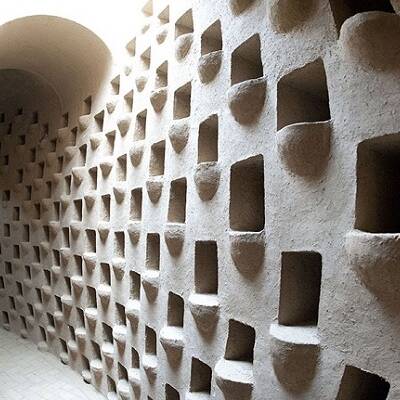Zilu of Yazd
Zilu is a very beautiful and yet simple and humble hand weave, and it can be said that it is this characteristic that has made it an original and traditional art of people who inhabit borders of the desert of Iran. Zilu Bafi of Meybod, in the province of Yazd, is quietly known in all over Iran. This weave, which mostly looks like Kilims, is usually seen with square patterns, in limited colors, as floor coverings in houses and occasionally Mosques. The primary material of Zilu is cotton yarn, and preparing this yarn is considered as the first of many steps of making a Zilu weave. That is why this craft is basically more common in regions with agriculture, and the cotton yarn used in Zilu are produced locally. The province of Yazd has a very hot and dry environment and is a very suitable birthplace for the Zilu in history. Because, in addition to beautiful patterns and unique colors, these hand weaves are used as light and cold floor coverings. Also, according to historical documents, the oldest remaining piece of Zilu belongs to Jama Mosque of Meybod.
The weaving machinery of Zilu looks very much like the looms of carpets. The motifs and patterns of Zilu are very common with those of carpets and Kilims, too. And yet there are some motifs in the Zilu that can be seen in architectural buildings of Iran. Geometric and herbal motifs are two main groups of patterns in Zilu, and diamonds and squares and crosses are dominant amongst the geometric group. Due to the nature of this weave, the flowers of Zilu patterns turn into linear designs. The Zilu generally consists of two patterns of “Goldani” and “Mehrabi”. The third kind of Zilu patterns are specific to this weave and are completely unique. They are usually provided in the market in two color one of which is white. Three famous combinations of Zilu are white and blue, green and beige, and blue and beige. Floor covering are the most important usage of Zilu. In addition to houses, they are very suitable for mosques because of their simplicity and serenity. Next to this, we have seen new usages of Zilu in recent years such as bags and cushions which has resulted in more prosperity of this ancient handicraft of desert lands of Iran. Zilu has been registered by the World Council of Handicrafts as the prominent handicraft of Meybod.
